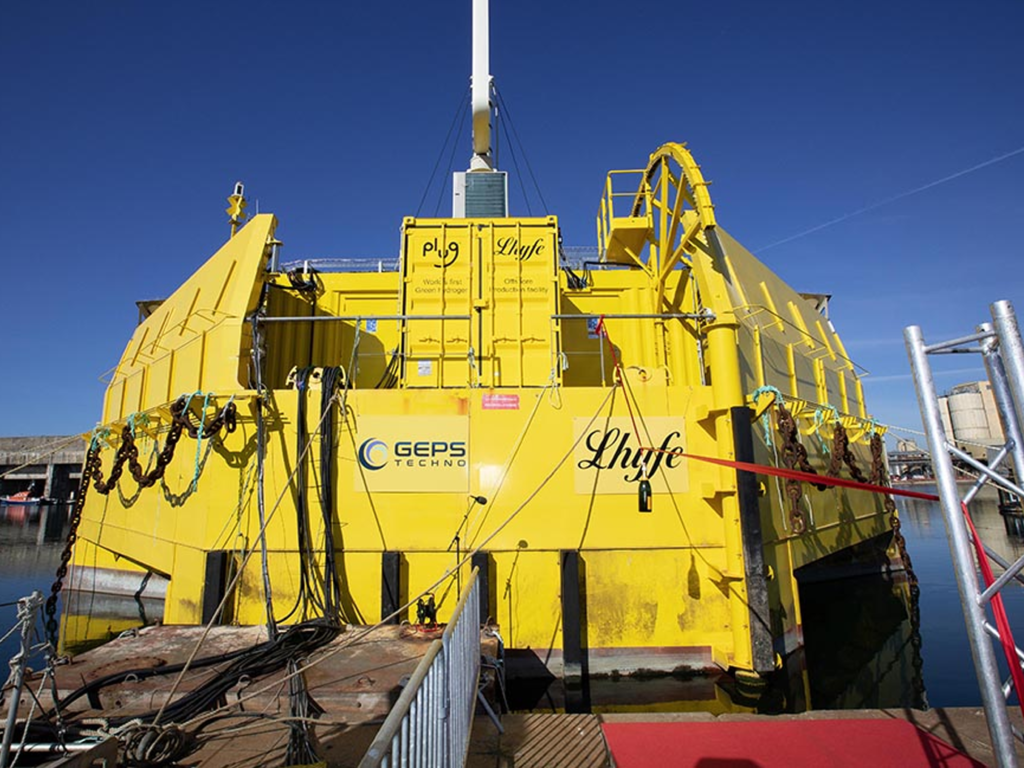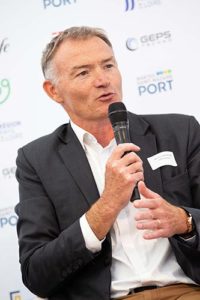On September 22, 2022, we inaugurated with the company Lhyfe the first hydrogen production platform in the world. A success of which we are all proud !

Lhyfe was indeed seeking to demonstrate that it is possible to produce hydrogen at sea. Initially, they wanted to test the behavior of a production unit in an environment subject to swell accelerations.
► The need : deploy the plant at sea on a system that is both sensitive to the conditions of the high seas but also sufficiently reliable and robust to limit the risk.
Why did Lhyfe choose the Wavegem plateform and Geps Techno ?
- Because the platform and its anchoring have been sized by the GEPS teams to withstand the conditions of this exposed offshore site
- Because a first sea trial campaign lasting more than 1 year on this same site showed that the system was very well adapted and that the hydrodynamic behavior of the platform was in line with the predictions of the engineers of GEPS techno
- Because the platform was designed from the start to be remotely controllable, even in the event of a power blackout
- Because its modularity makes it possible to envisage numerous arrangements of equipment on deck.
Geps Techno expertise at the service of blue groth

This project was a good way for the GEPS Techno teams to enrich and demonstrate once again their expertise. That is: the integration and deployment of complex equipment, at sea, on autonomous floating structures.”We are used to our customers asking us to do the impossible at the four corners of the sea“, recalled Jean-Luc Longeroche on Inauguration Day. As for the Dikwe project (breakwater for energy recovery with the Legendre group), it is a crossroads: Lhyfe needed to get to sea quickly, GEPS Techno enabled him to accomplish this in order to accomplish this feat»Currently installed at the quay in Saint Nazaire, the Sealhyfe project will join the Sem-Rev site off Le Croisic in the spring of 2023 to connect to the FLOATGEN floating wind farm.
The sea, the future of renewable energies ?
As Jean-Luc Longeroche explained to Newstalk Energie in August 2022, “we will see renewable energies move towards the sea, which will limit conflicts of use in relation to land. Despite the resitance that still exists, these are industrial solutions that are evolving very quickly, with a cost that is being reduced, and which are set to take an important place. Floating wind turbines, in particular, will make it possible to move further away from the land and therefore to have a more regular source of wind while limiting the visual impact from the coast. »
